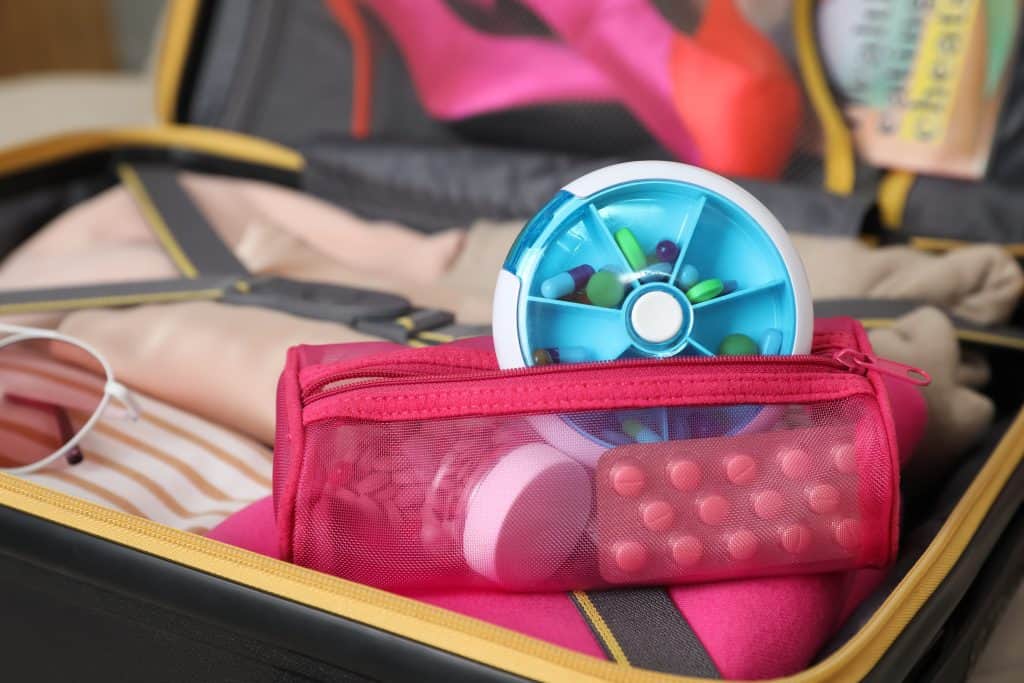Traveling internationally with vitamins requires some planning due to airline regulations and country-specific customs rules. Many folks lose time or important supplements at security checkpoints by not preparing properly. This 2025 guide gives straightforward instructions for safely transporting all types of vitamins across borders, including the latest TSA instructions and customs details for major destinations. Take it from travel expert Rick Steves, there’s nothing more annoying than arriving somewhere and realizing you’ve lost your meticulously curated vitamin stash!
Understanding Vitamin Types and Their Travel Requirements
Before packing your vitamins, note that different supplement forms have varied rules:
Solid Vitamins
- Tablets, capsules, and gummies are typically the easiest to bring with no quantity limitations for security screening.
- Some countries still have specific customs limits.
Liquid Vitamins
- Must follow the 3-1-1 rule: each container under 3.4 oz/100ml and placed in a clear, quart-sized bag for screening.
- Only one such bag per traveler.
Powdered Vitamins
- Usually no size restrictions, but they might get extra scrutiny due to their appearance.
- Clearly labeling them helps reduce suspicion.
| Vitamin Type | Carry-On Rules | Checked Bag Rules | Special Considerations |
| Solid (pills, tablets) | Unlimited quantity | Unlimited quantity | Original packaging if possible |
| Liquid | ≤3.4 oz containers in quart bag | No size limit | Transfer to travel containers if needed |
| Powder | Allowed | Allowed | May trigger extra screening |
Airline and TSA Regulations for Vitamins
The Transportation Security Administration (TSA) has outlined how vitamins can be brought on planes:
Solid Vitamins: Permitted in both carry-on and checked luggage without quantity restrictions.
Liquid Vitamins: Follow the 3-1-1 rule in carry-ons: containers of 3.4 ounces (100ml) or smaller, fitting in one quart-sized, clear, resealable bag, limited to one bag per passenger. Although not mandatory, original packaging and clear labels help speed up inspection.
For more details on packing preparations, look at the CDC’s Pack Smart guidelines: https://wwwnc.cdc.gov/travel/page/pack-smart.
Security agents mainly care about safety, not prescription laws, so neatly labeled supplements move along faster. Gummy vitamins are allowed in both carry-on and checked baggage since they’re classified as solid.
Country-Specific Customs Regulations
Japan
- Permits a 2-month supply of vitamins without special paperwork.
- Prohibits supplements containing certain animal products.
- Some over-the-counter supplements elsewhere may require a prescription in Japan.
Australia
- Allows a 3-month supply under personal rules.
- The Therapeutic Goods Administration (TGA) restricts codeine-containing products.
- High-dose melatonin (>1mg) calls for a prescription.
- Customs officers might confirm items match your declared conditions.
United Arab Emirates
- Dubai authorities have strict supplement registration laws.
- Controlled ingredients need special permits.
- Unauthorized supplements can be confiscated or lead to fines.
European Union
- The EFSA enforces specific guidelines under Novel Food regulations.
- Some nations restrict vitamin D dosage to 25μg (1000 IU).
- Certain herbal supplements (like kava) are not allowed in Nordic countries.
To confirm updated regulations before your trip, consult the destination’s embassy website, health department portals, or customs resources. As Rick Steves would note, measure twice and pack once, less trouble at the border means more time sipping espresso on the piazza.
Restricted Substances and Identification
Commonly Prohibited Ingredients
| Substance | Restricted Locations | Common In |
| Pseudoephedrine | Japan, Singapore | Cold medications, energy supplements |
| CBD Oil | UAE, China, Malaysia | Cannabis-derived products, sleep aids |
| Melatonin >1mg | UK, EU | Sleep supplements |
| Kratom | Australia, Scandinavia | Herbal supplements, pain products |
| Kava | EU, Australia | Relaxation supplements |
If in doubt, check the complete ingredient list against the destination’s prohibited substances. Some travelers find surprise restrictions at the last minute, which can cause big headaches.
Step-by-Step Guide to Packing Your Vitamins
- Verify current regulations. Check the TSA site for carry-on restrictions and your destination’s customs website for supplement rules.
- Gather documentation. If you have prescription vitamins, bring copies of prescriptions.
- Separate by type. Group solid, liquid, and powder vitamins so you can pack them correctly.
- Pack solid vitamins properly. Original containers are best. If you transfer them, clearly label each container. Pill organizers can also help you stay organized.
- Handle liquid vitamins. Transfer them into 3.4 oz or smaller containers if you’ll carry them on, then place them in a clear quart-sized bag. Make sure the lids are secure.
- Organize your luggage. Keep essential vitamins in your carry-on for easy access. As Rick jokes, if they’re rummaging through your bag, you don’t want them to find vitamins buried under an unmentionable mountain of socks.
Documentation Requirements
A doctor’s note can be helpful when traveling with prescription vitamins. Include:
- Your full name, date of birth, and passport number.
- Medication details: brand name, dosage, and schedule.
- Prescriber’s credentials and contact information.
- Reason for the prescription.
Storing a digital copy can also be a lifesaver, just don’t rely on shaky airport Wi-Fi to download it.
Essential Packing Tips and Best Practices
For more on smart packing strategies, see the CDC’s Pack Smart resource: https://wwwnc.cdc.gov/travel/page/pack-smart.
• Use pill organizers: Weekly ones save space and keep you on track.
• Single-dose packets: Pre-portion each day’s vitamins in small labeled bags.
• Guard against humidity: Toss a tiny silica gel packet in the container.
• Gummy meltdown: In hot climates, gummies can turn into goo.
• Keep a small supply on you: If your luggage is delayed, you won’t miss doses.
And remember Rick’s favorite tip: Don’t overpack, there’s always a pharmacy somewhere, even in the most unexpected destinations.
Handling Confiscations at Checkpoints
If officials confiscate your vitamins:
- Stay calm and ask for a written notice that explains why they’re taking your items.
- Take notes or photos of the event (if allowed).
- Contact your embassy if it involves large quantities of essential vitamins.
If needed, you might replace vitamins locally. In Japan, pharmacies sometimes require prescriptions for items that are over-the-counter back home. In the UAE, large chain pharmacies stock common brands. In many EU nations, stores like DM or Drogerie Markt have basic vitamins. For special shipments, some services can mail them, but be sure to follow the rules.
Final Checklist
- Research your destination’s supplement regulations thoroughly.
- Get prescriptions or a doctor’s note for any prescription vitamins.
- Label all vitamin containers clearly.
- Keep liquids under 3.4 oz in a quart-sized bag.
- Bring no more than a 90-day supply (or your destination’s limit).
- Store essentials in carry-on luggage, with a backup in checked bags.
- Make digital copies of necessary documents.
- Confirm your supplements don’t include banned ingredients.
Frequently Asked Questions
1. Do vitamins need to be in original containers when flying internationally?
While the TSA does not strictly require it, original packaging is usually recommended for trouble-free security checks.
2. How should I pack vitamins for a flight?
Keep solid vitamins in original containers or clearly labeled organizers, put liquid vitamins in containers under 3.4 oz, carry prescription documentation if needed, and store crucial supplements in your carry-on.
3. Can you take supplements on a plane internationally?
Yes, you can, but rules for liquids and prescription supplements differ by country. Always check customs information before you go.
4. Do you have to declare vitamins at customs?
It depends on the country. It’s generally wise to declare them if you’re unsure, to avoid potential issues.
5. How do I pack pills for international travel?
Keep pills in original packaging or labeled organizers, bring documentation if they’re prescription items, and only pack what you need for your trip plus a few extra days. Rick Steves would joke that you can pack less underwear but always keep plenty of your important vitamins handy!
Conclusion
Safely traveling with vitamins in 2025 means understanding airline rules and the customs policies of your destination. With these tips, and a dash of Rick Steves–style preparedness, you’ll keep your vitamin routine intact and hopefully share a laugh or two along the way. Bon voyage!

